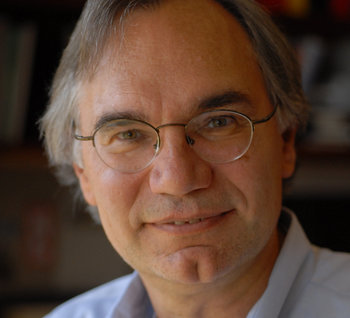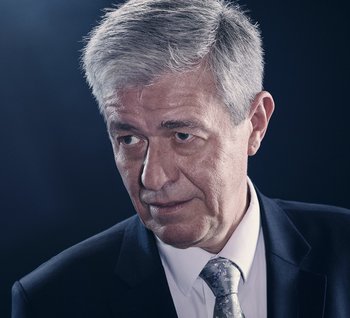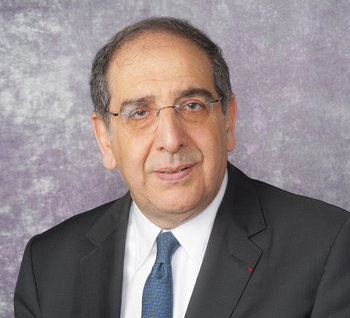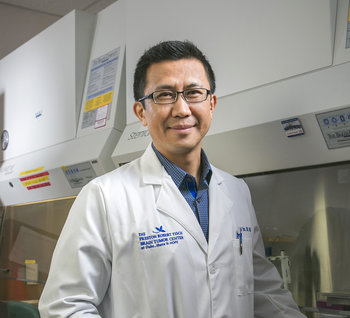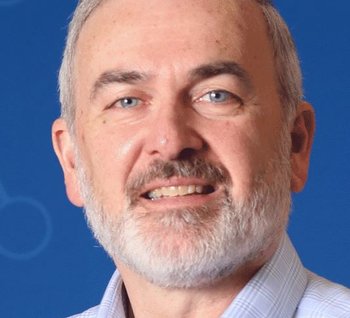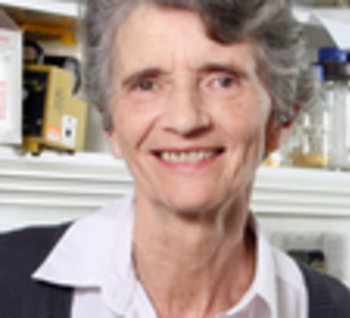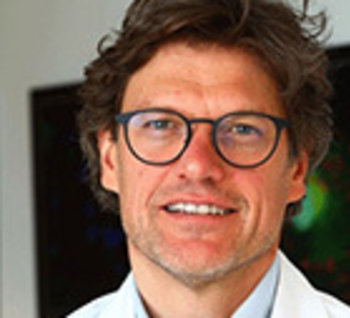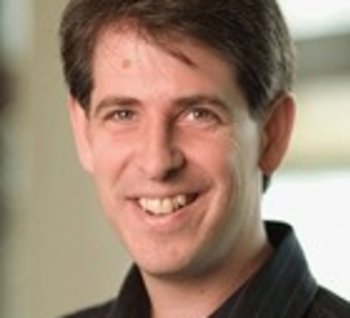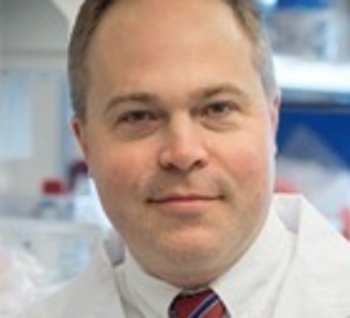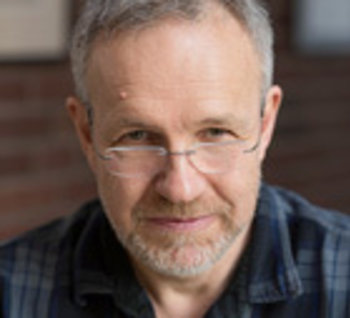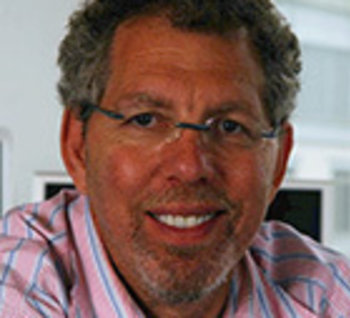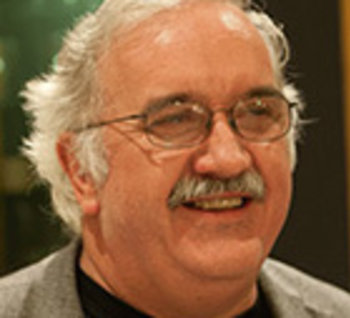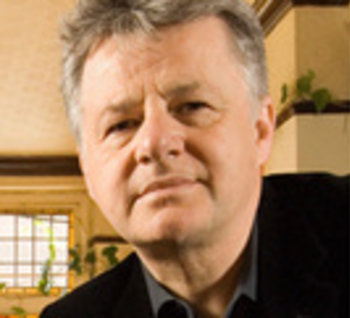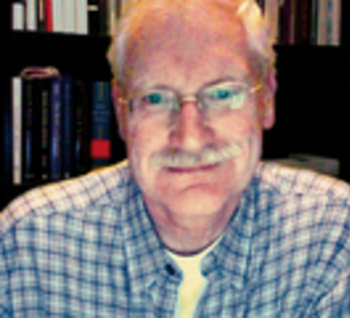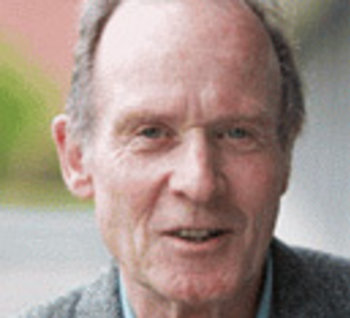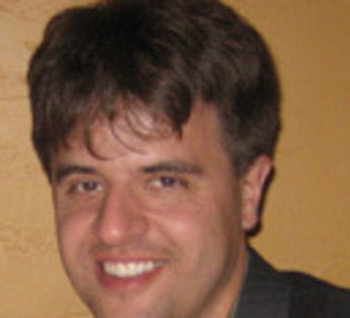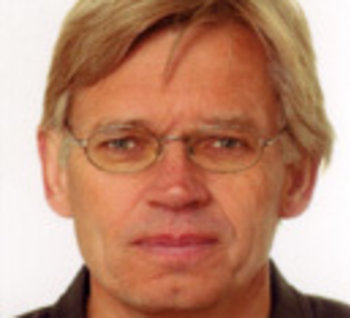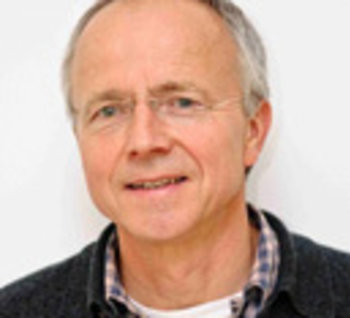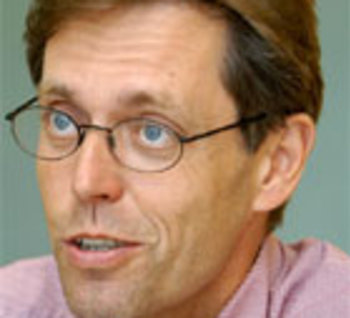An award for neurological research
The International Prize for Translational Neuroscience of the Gertrud Reemtsma Foundation has been awarded for outstanding achievements in basic neurological research every year since 1990 (until 2019: K-J. Zülch Prize). The prize is endowed with 50,000 Euros and has, until now, always been awarded and shared by two scientists.
Award Winners 2024: For distinguished decoding of the mind
Richard A. Andersen studied biochemistry at the University of California, Davis, and he earned his doctorate in physiology from the University of California, San Francisco in 1979. He subsequently spent time as a postdoctoral research fellow at Johns Hopkins Medical School and as an assistant professor at the Salk Institute for Biological Studies in California. He became an associate professor in 1987 and then Professor of Neuroscience at the Massachusetts Institute of Technology (MIT) in 1990. Since 1993, he has been the James G. Bowsell Professor of Neuroscience at the California Institute of Technology (Caltech), where he has also heads the T&C Brain-Machine Interface Centre since 2017. He is a member of the National Academy of Sciences, the National Academy of Medicine, and the American Academy of Arts and Sciences.
Karl J. Friston studied Natural Sciences at Gonville and Caius College, Cambridge UK in 1980 and subsequently Medicine at King's College Medical School, London University. In 1988, he completed his specialist training in psychiatry at Oxford University and then went to Hammersmith Hospital, London for a research stay in the neuroimaging department. Between 1992 and 1994, he spent two years researching at the Neurosciences Institute La Jolla CA, USA. He has been a researcher at the Institute of Neurology, UK, since 1994 and has been Scientific Director of the Wellcome Trust Centre for Neuroimaging since 2001. Since 2022, he has also been the chief scientist at Verses, a company specialising in the development of new forms of artificial intelligence.
Award Winners 2023: For developing treatment for hereditary blindness
Botond Roska first studied cello and mathematics in Budapest. He then obtained his M.D. at the Semmelweis Medical School, a Ph.D. in neurobiology from the University of California, Berkeley and studied genetics and virology as a Harvard Society Fellow at Harvard University and the Harvard Medical School. He then led a research group at the Friedrich Miescher Institute in Basel from 2005-2018. In 2010 he became Professor at the Medical Faculty and in 2019 Professor at the Science Faculty of the University of Basel. Since 2018 he is a founding director of the Institute of Molecular and Clinical Ophthalmology Basel. There, he leads a research group focusing on the understanding of vision and its diseases and the development of gene therapies to restore vision.
José-Alain Sahel studied medicine in Paris and became an ophthalmologist at Louis Pasteur University Hospital in Strasbourg in 1984. After a fellowship at the Massachusetts Eye and Ear Infirmary, Harvard Medical School, and a visiting scholarship at Harvard University, he became a Professor of Ophthalmology at Louis Pasteur University in Strasbourg in 1988, and in 2002 at Sorbonne University in Paris, and University College London. He founded the Vision Institute in Paris in 2008 and directed it until 2021. Since 2023 he is professor emeritus at Sorbonne University. Since 2016 he is endowed Distinguished Professor and Chairman of the Vision Institute at the University of Pittsburgh Medical Center.
Award Winners 2022: For research on the causes of Rett syndrome
Award Winners 2021: For significant contributions to improving the diagnosis of brain tumours
Hai Yan studied medicine at the Peking University Health Science Center, where he received his medical degree in 1991. In 1996, he received his PhD from the College of Physicians and Surgeons at Columbia University, New York. He then went on to the Howard Hughes Medical Institute of Johns Hopkins University in 1997 and to Duke University Medical Center in 2003, where he is now professor of pathology and neuro-oncology.
Andreas von Deimling studied medicine in Fribourg and began his clinical training in 1988 at the University Hospital in Zurich, Switzerland. He then went on to the Neuro-Oncology Department of the Massachusetts General Hospital in 1990 and to the Institute of Neuropathology at the University of Bonn in 1992. In 1998, he became Director of Neuropathology at the Charité of Humboldt University in Berlin. In 2007, he moved to Heidelberg to become Director of Neuropathology at the University of Heidelberg and Director of the Clinical Cooperation Unit Neuropathology at the German Cancer Research Center.
Award Winners 2020: Removal of protein deposits from the brain
Prize Winners 2019: Therapy for muscle weakness
As a biochemist, Adrian Krainer has been researching for decades how genes are transcribed and translated into proteins, and how the underlying mechanisms can be influenced. During gene transcription into RNA, sequences containing information for the protein, called exons, must be separated from non-coding sections (introns) and joined together. This editing process is known as RNA splicing. However, a mutation in an exon of the SMN2 gene causes that exon to be omitted most of the time during RNA splicing, producing only a truncated protein, which rapidly degrades.
Adrian Krainer has been researching a type of molecule that can be used to correct the defective RNA splicing. The so-called antisense oligonucleotides, are short RNA-like segments which bind to specific sites on the transcript of a gene and influence how the information from the gene is converted into protein. In the case of defective SMN2 RNA splicing, Krainer found a short segment of 18 nucleotides that would aid the production of the entire protein.
In collaboration with Ionis Pharmaceuticals, Krainer used mice that do not produce their own SMN protein, but instead have two copies of the human SMN2 gene, to test their antisense oligonucleotides, called Nusinersen. These mice develop severe spinal muscular atrophy and die within ten days of birth. However, when Krainer’s team administered Nusinersen before the onset of symptoms, the mice developed no muscle atrophy, and survived for over 250 days.
Adrian Krainer studied biochemistry at Columbia University and earned his doctorate in biochemistry and molecular biology from Harvard University. To continue his research career, he moved to Cold Spring Harbor Laboratory, where he first carried out postdoctoral research, and then obtained a professorship. He has been a full professor there since 1994 and St. Giles Foundation Professor since 2009.
Following these promising results, Richard Finkel and colleagues investigated the effectiveness and potential side effects of Nusinersen in clinical trials. These trials also produced astonishing results. In a study of infants with the type I disorder, the original intention was to determine whether the survival of non-ventilated patients was extended by administering Nusinersen. However, it soon became clear that patients were also developing well and achieving motor milestones, as a result of Nusinersen treatment.
The results of an interim analysis of the study were so positive that it became ethically unreasonable to withhold Nusinersen from the placebo group. These infants were then enrolled in another study, in order for them to also benefit from the drug. Finkel realized that for the first time a drug significantly alleviates or reverses the reduction in patients’ movement and extends survival. As a result of the successful clinical trials, Nusinersen was approved as a drug in the US at the end of 2016, with approximately 7,500 patients worldwide being treated with it to date.
After studying chemistry and medicine, Richard Finkel moved to Harvard Medical School where he specialized in paediatrics and neurology. He subsequently worked as a paediatrician and neurologist in hospitals in Denver and Philadelphia. He is currently Professor of Neurology at the University of Central Florida and Head of Neurology at Nemours Children’s Hospital in Orlando.
Prize Winners 2018: Autoimmunity in neurological diseases
Angela Vincent, a medically-qualified neuroimmunologist, worked at University College in London with the late Ricardo Miledi, and the Royal Free Hospital with the late John Newsom-Davis. She spent the last 30 years at the University of Oxford where until recently she ran a national and international diagnostic antibody service and research group. She currently holds honorary positions in Oxford and London.
British-born Angela Vincent initially studied autoimmune diseases of the peripheral nervous system in which signal transmission between nerves and muscles are impaired. This led her to the then revolutionary insight that certain antibodies can also attack the central nervous system. She subsequently developed the diagnostic methods widely used in hospitals today.
Following his medical studies in Barcelona, Josep Dalmau initially worked as a neurologist before continuing his scientific career in Jerome Posner’s laboratory. He currently holds professorships at the University of Pennsylvania and the University of Barcelona.
His former colleague from Barcelona, Spain, Josep Dalmau is known for discovering several autoimmune encephalitis syndromes, developing diagnostic tests, and revealing the mechanisms whereby the autoantibodies are directly responsible for the brain dysfunction.
Jerome Posner was Head of Neurooncology at the Memorial Sloan-Kettering Cancer Center in New York and Professor of Neurology and Neuroscience at Cornell University in New York for many years.
Jerome Posner is considered a pioneer in the field of research into these syndromes and their causes, having systematically described many of the paraneoplastic diseases for the first time and developing the first blood tests used to diagnose these disorders.
Prize Winners 2017: Sleep, Coma and Consciousness
The focus of Steven Laureys’ research is the neuronal basis of consciousness and changes caused by damage to the brain. Day by day, doctors face the difficult task of assessing the state of consciousness of coma survivors who are unable to communicate. Accurate diagnosis of this state is crucial for the prognosis of these patients and for determining the appropriate treatment. Until recently, the diagnostic procedures used were very imprecise. By using a combination of imaging and electrophysiology techniques, such as PET, functional MRI scanning and electroencephalography (EEG) based “brain computer interfaces”, Laureys and his team have transformed the clinical care for patients in coma, “vegetative state”, minimally conscious and locked-in syndromes.
Particularly important were their findings on a 22-year old man who was erroneously diagnosed as being in a “vegetative state”. Their investigations showed that, when asked to imagine playing tennis, the patient showed similar patterns of brain activity to healthy subjects. This could be used to establish a motor-independent communication. A study of 54 patients with chronic disorders of consciousness showed that ten percent had some conscious control over their brain activity despite being unable to communicate at the bedside.
These methodologically highly complex studies laid the foundations for modern methods of diagnosing disorders of consciousness. This has meant better adaptation of therapeutic strategies including transcranial direct current stimulation, and has also improved clinical care and, more importantly, quality of life for patients with disorders of consciousness.
Steven Laureys took his medical degree at the Vrije Universiteit Brussel, where he subsequently specialised in neurology. At the same time he started to pursue a career in research and obtained his MSc in Pharmaceutical Medicine in 1997. He moved to the University of Liège, where he obtained his doctorate in 2000. Steven Laureys is Research Director at the Belgian National Fund of Scientific Research and leads the GIGA Consciousness Research Centre and Coma Science Group at the University and University Hospital of Liège.
Using data collected over many years, Giulio Tononi and his team have developed a hypothesis on the function of sleep, known as the synaptic homeostasis hypothesis. This posits that the core function of sleep is to restore synaptic connections between neurons to their normal state. When we sleep, the synapses which have formed or been potentiated while we were awake and processing information are able to downscale. Without sleep to renormalize synaptic transmission, there would be ever greater synaptic potentiation and an ever-increasing proliferation of new synapses. The brain would quickly run up against its limits and would be unable to absorb and process new information.
Tononi has also made use of changes in brain activity during sleep to gain insights into consciousness. He has developed a theory on the emergence of consciousness known as integrated information theory. Most other theories attempt to explain how the human brain can develop consciousness, but Tononi’s theory turns the question on its head. It identifies the key qualities of consciousness and then asks which brain mechanisms could produce these qualities. In addition to its neurophilosophical significance, Tononi’s theory is also being applied in illnesses which involve altered states of consciousness.
Giulio Tononi took his medical degree, specializing in psychiatry, and a doctorate in neuroscience at the University of Pisa. From 1990–2000, he was a member of The Neurosciences Institute, first in New York and then in San Diego. He is currently Professor of Psychiatry and Consciousness Science and the Director of the Wisconsin Institute for Sleep and Consciousness, and also holds the David P. White Chair in Sleep Medicine at the University of Wisconsin–Madison.
Prize Winner 2016: Forms of cancer in the cerebellum
Over 100 different types of tumours can affect the brain and spinal cord, all of which respond differently to treatment. A therapy that may mean a cure for one patient will have no effect in another; thus, it is often unclear which treatment will be of help to which patient. The research being carried out by Stefan Pfister from the German Cancer Research Center and the Heidelberg University Hospital and Michael Taylor from the University of Toronto and The Hospital for Sick Children (SickKids) has contributed to the achievement of crucial improvements in the diagnosis and treatment of brain tumours. They showed that medulloblastoma, the most common type of malignant brain tumour in children, can be divided into four different types which must be treated individually. This makes it possible to adopt a targeted approach to the treatment of these forms of cancer for the first time. In recognition of their achievements, the two scientists have been awarded the K. J. Zülch Prize by the Gertrud Reemtsma Foundation which comes with a prize fund of 50,000 euros.
Stefan M. Pfister studied medicine at the Universities of Hamburg and Tübingen. Following a research stay at Harvard Medical School in the US he returned to Germany and worked at the University Medical Centre Mannheim, the Heidelberg University Hospital, and the German Cancer Research Center in Heidelberg, among other institutions. In 2012 he was appointed Head of the Division Pediatric Neurooncology at the DKfZ. He has been Professor of Paediatrics at the University of Heidelberg since 2014.
Over 100 different types of tumours can affect the brain and spinal cord, all of which respond differently to treatment. A therapy that may mean a cure for one patient will have no effect in another; thus, it is often unclear which treatment will be of help to which patient. The research being carried out by Stefan Pfister from the German Cancer Research Center and the Heidelberg University Hospital and Michael Taylor from the University of Toronto and The Hospital for Sick Children (SickKids) has contributed to the achievement of crucial improvements in the diagnosis and treatment of brain tumours. They showed that medulloblastoma, the most common type of malignant brain tumour in children, can be divided into four different types which must be treated individually. This makes it possible to adopt a targeted approach to the treatment of these forms of cancer for the first time. In recognition of their achievements, the two scientists have been awarded the K. J. Zülch Prize by the Gertrud Reemtsma Foundation which comes with a prize fund of 50,000 euros.
Michael Taylor studied medicine at the University of Western Ontario, Canada, and then specialized in surgery at the University of Toronto. Following a research stay in Memphis, USA, he moved back to Canada and took up a post as neurosurgeon at the Hospital for Sick Children in Toronto.
Prize Winner 2015: Revolution in Microscopy
Anyone who wants to understand the brain must be able to see the brain's microscopically small switching units – the neurons – at work. Conventional light microscopes are not sufficient to do the job. Only the microscopes developed by Winfried Denk and his colleagues display the structure of neurons and their changes in the intact brain. Consequently, neuroscientists can now observe neurons in the living brain and generate three-dimensional images of nerve tissue, including all its synaptic connections. F
Prize Winners 2014: Research into metabolic diseases
Obesity is very much in the genes – that is the surprising finding of biomedical research in recent years. The Gertrud Reemtsma Foundation has bestowed the 2014 Zülch Award on two doctors who have rendered outstanding services to research into metabolic diseases. Jeffrey M. Friedman identified the hormone leptin and found that it plays a key role in controlling food intake, body weight and many other physiologic processes. Sir Stephen O'Rahilly recognized that human obesity can be a hereditary disorder and identified a number of causative gene mutations. With their findings, both have helped to ensure that overweight and obesity states are no longer stigmatised as being due to a weak will or lack of discipline.
The ranks of overweight people are increasing so dramatically worldwide that experts are now talking of an epidemic. More than half of adults in Germany are overweight, and nearly a quarter are considered obese. The proportion of overweight people is also rising dramatically in many emerging countries. It is often thought that this is a result of a modern lifestyle with calorie rich and excessively rich food although this does not explain why some people are obese and others are lean. Thus while diet and exercise appear to be important in controlling body weight, it has long been evident from studies of twins and of adopted children that genetic factors play a major role in influencing an individual’s susceptibility to becoming obese.
Jeffrey M. Friedman has extensively investigated the role of leptin and discovered that it keeps fluctuations in energy reserves within narrow limits. Leptin is produced by the body’s fat cells, which release the hormone into the bloodstream. The quantity released mirrors the available fat reserves: If the fat proportion is high, up to 100 times more leptin is secreted. As a result, body weight decreases. Conversely when fat mass falls, leptin levels go down which in turn stimulates appetite. When the researchers administered the hormone to mice lacking the leptin gene, the animals lost their appetite, and their blood sugar levels and body weight fell.
The target of leptin is the brain – the hypothalamus to be precise. Within the hypothalamus Friedman discovered nerve cells carrying a receptor for leptin. When the hormone binds to this receptor, it alters the wiring of nerve cells that control eating behaviour, also diminishing the sense of pleasure associated with eating.
Thanks to research by Sir Stephen O'Rahilly and his colleagues, we are now aware of a number of hereditary metabolic disorders causing obesity and diabetes that are due to specific genetic mutations. He has shown, for example, that mutations in the leptin and melanocortin-4-genes can cause massive obesity in human patients. Overweight and obesity states can therefore be due to a single gene mutation.
Many of those genes are active in nerve cells in the brain, where they regulate neural activity and control eating behaviour. It is now recognized that obesity can be identified as a hereditary disorder that is modulated by external factors such as diet and exercise – a finding that O'Rahilly was instrumental in bringing about.
The discovery of leptin in the mouse by Friedman and O’Rahilly’s demonstration that it plays a similar role in humans can be regarded as one of the most important breakthroughs in metabolic research since the discovery of insulin. It has meanwhile led to new forms of treatment. For example, leptin is now used to treat patients with lipodystrophy, which can result in a severe form of diabetes.
Jeffrey M. Friedman was born in Orlando, Florida and studied medicine in Albany, New York state. Mr. Friedman is researching and teaching at Rockefeller University and the Howard Hughes Medical Institute in New York.
Obesity is very much in the genes – that is the surprising finding of biomedical research in recent years. The Gertrud Reemtsma Foundation has bestowed the 2014 Zülch Award on two doctors who have rendered outstanding services to research into metabolic diseases. Jeffrey M. Friedman identified the hormone leptin and found that it plays a key role in controlling food intake, body weight and many other physiologic processes. Sir Stephen O'Rahilly recognized that human obesity can be a hereditary disorder and identified a number of causative gene mutations. With their findings, both have helped to ensure that overweight and obesity states are no longer stigmatised as being due to a weak will or lack of discipline.
The ranks of overweight people are increasing so dramatically worldwide that experts are now talking of an epidemic. More than half of adults in Germany are overweight, and nearly a quarter are considered obese. The proportion of overweight people is also rising dramatically in many emerging countries. It is often thought that this is a result of a modern lifestyle with calorie rich and excessively rich food although this does not explain why some people are obese and others are lean. Thus while diet and exercise appear to be important in controlling body weight, it has long been evident from studies of twins and of adopted children that genetic factors play a major role in influencing an individual’s susceptibility to becoming obese.
Jeffrey M. Friedman has extensively investigated the role of leptin and discovered that it keeps fluctuations in energy reserves within narrow limits. Leptin is produced by the body’s fat cells, which release the hormone into the bloodstream. The quantity released mirrors the available fat reserves: If the fat proportion is high, up to 100 times more leptin is secreted. As a result, body weight decreases. Conversely when fat mass falls, leptin levels go down which in turn stimulates appetite. When the researchers administered the hormone to mice lacking the leptin gene, the animals lost their appetite, and their blood sugar levels and body weight fell.
The target of leptin is the brain – the hypothalamus to be precise. Within the hypothalamus Friedman discovered nerve cells carrying a receptor for leptin. When the hormone binds to this receptor, it alters the wiring of nerve cells that control eating behaviour, also diminishing the sense of pleasure associated with eating.
Thanks to research by Sir Stephen O'Rahilly and his colleagues, we are now aware of a number of hereditary metabolic disorders causing obesity and diabetes that are due to specific genetic mutations. He has shown, for example, that mutations in the leptin and melanocortin-4-genes can cause massive obesity in human patients. Overweight and obesity states can therefore be due to a single gene mutation.
Many of those genes are active in nerve cells in the brain, where they regulate neural activity and control eating behaviour. It is now recognized that obesity can be identified as a hereditary disorder that is modulated by external factors such as diet and exercise – a finding that O'Rahilly was instrumental in bringing about.
The discovery of leptin in the mouse by Friedman and O’Rahilly’s demonstration that it plays a similar role in humans can be regarded as one of the most important breakthroughs in metabolic research since the discovery of insulin. It has meanwhile led to new forms of treatment. For example, leptin is now used to treat patients with lipodystrophy, which can result in a severe form of diabetes.
Sir Stephen O’Rahilly is also a medical doctor and hails from Ireland, where he studied at the National University of Ireland in Dublin. Since 2002, he has been Professor for Clinical Biochemistry and Medicine at Cambridge University, UK and has also headed various research projects at the university-affiliated Addenbrooke’s Hospital.
Prize Winners 2013: Structure and function of the brain’s reward system
Thanks to the research conducted by Wolfram Schultz and Raymond Dolan, we now know about a number of systems which regulate learning and decision-making processes. These networks convey reward, feelings and attention and thus influence the decision-making processes in the brain. The two researchers have made a major contribution to explaining the role of various brain centres in conveying gratification.
Raymond Dolan's investigations have shown that the reward system works in a similar way in humans. He used methods, such as functional nuclear magnetic resonance imaging (fMRI) coupled to computational modelling to non-invasively analyse the role of dopamine plays in decision-making processes. For example, he was able to explain why older people might make worse decisions when they are required to estimate the amount of an anticipated reward in a volatile environment. It appears that this is caused by a sub-clinical depletion of the dopaminergic nerve cells that occurs to a variable degree in normal ageing. By giving the dopamine agonist L-Dopa, which is also used to treat Parkinson's disease, Dolan was able to improve learning and decision-making in older test subjects such that their performance was more akin to an average twenty year old subject.
Using a combination of imaging processes, computational modelling and pharmacological interventions, he also discovered two separate decision making pathways work in parallel in the brain. One pathway runs centrally through the nucleus caudatus and is active when the brain contemplates the possible consequences of a decision. The other follows a lateral route via the putamen and enables decisions to be taken on the basis of learned experience or habit. He has shown that boosting dopamine with L-Dopa biases decision making towards being more consequentialist than habit based.
Dolan has also made important discoveries about how the brain makes social decisions, such as why people tend to take t very little notice of negative information and so underestimate the probability of negative events in the future. Here again he has shown an influence of dopamine, where boosting brain levels of dopamine enhances the bias not to update on the basis of receipt of negative information.
Raymond Dolan comes from Ireland and studied medicine at the University of Ireland in Galway. He has worked clinically at various hospitals, most notably at the National Hospital for Neurology and Neurosurgery, and is now Director of the Wellcome Trust Center for Neuroimaging at University College London. Since 2012 he is also an External Scientific Member of the Max Planck Institute for Human Cognitive and Brain Sciences in Leipzig.
Thanks to the research conducted by Wolfram Schultz and Raymond Dolan, we now know about a number of systems which regulate learning and decision-making processes. These networks convey reward, feelings and attention and thus influence the decision-making processes in the brain. The two researchers have made a major contribution to explaining the role of various brain centres in conveying gratification.
For example, Wolfram Schultz discovered that rewards activate dopamine cells in the midbrain. To do this, he conducted conditioning experiments with non-human primates in which the animals had to learn to link a neutral stimulus with a reward. If the animals did so, the cells in the tegmentum responded to the stimulus by generating a short burst of electrical signals. If the stimulus was not followed by a reward, the neuronal activity subsided, thus adjusting to the level of reward. Furthermore, the cells even compare the amount of the actual with that of the expected reward and determine whether their expectations have been met. If the reward exceeds their expectations, the cells become active; but if not, the cells remain quiescent.
Wolfram Schultz thus discovered the biological basis underlying key assumptions made by the psychological learning theory concerning gratification. He also used findings from theories on learning and economic decision-making to find reward and risk signals in dopamine cells and other parts of the reward system.
Wolfram Schultz was born in Meissen and studied medicine, mathematics and philosophy in Hamburg and Heidelberg. After research residencies at the Max Planck Institute for Biophysical Chemistry in Göttingen, in Buffalo and in Stockholm, from 1977 to 2001 he carried out research and taught at the University of Fribourg in Switzerland. He has been at the University of Cambridge since 2001.
Prize Winners 2012: Founders of Optogenetics
The prize winners founded the research field of optogenetics and significantly advanced it. Thanks to their research, it is possible today to activate or deactivate nerve and muscle cells with high temporal and spatial precision using light instead of electrodes. Ernst Bamberg, together with his colleagues Peter Hegemann and Georg Nagel, discovered the specific properties of the light-sensitive ion channels known as the channelrhodopsins in single-celled algae.
Karl Deisseroth recognized the enormous potential of channelrhodopsins for neuroscience early on. With Georg Nagel and Ernst Bamberg in 2005, he transferred channelrhodopsin-2 to the nerve cells of rat brains and was thereby able to trigger action potentials through optogenetics for the first time. Moreover, he was successful in activating channelrhodopsins in free-moving rats. To do this, he conducted light directly into the brain using glass fibre cables. In this way, he could investigate how nerve cells create behaviours such as movement, fear or social behaviour in different species and how the learning and memory processes occur.
Peter Hegemann had already begun research into how algae perceives light at the Max Planck Institute of Biochemistry in Martinsried back in 1985. In 2002 and 2003 at the University of Regensburg with Georg Nagel and Ernst Bamberg, he was able to demonstrate the extraordinary way that algae rhodopsins function: by transferring rhodopsin genes to egg cells of the clawed frog, they determined that the algae rhodopsins combine light receptors and ion channels in a single protein.
Georg Nagel has been researching the electrophysiological properties of algae rhodopsins since the early 1990s. From 1995 at the Max Planck Institute of Biophysics, he and Ernst Bamberg were successful in transferring various bacteriological rhodopsins to frogs’ eggs and human nerve cells, as well as in describing their electrophysiological properties.
Prize Winners 2011: Parkinson Research
Thomas Gasser studied the genetic makeup of such families and discovered different genes that can lead to the development of Parkinson’s disease and other mobility disorders, such as Myoklonus-Dystonia syndrome. For example, he identified the LRRK2 gene as the trigger of the most common inherited form of Parkinson’s disease so far.
Furthermore, his work has shown that genetic factors are also important for the sporadic form of Parkinson’s disease. These mutations are relatively prevalent in the general population, but every single one of them increases the risk for Parkinson only very little. However, in combination with each other and possibly with other environmental factors they develop their detrimental effects. These findings are the basis for developing treatments of Parkinson’s disease itself instead of merely easing its symptoms.
Gasser, who was born in Stuttgart in 1958, specialised in the genetics of neurological disorders at an early stage in his career. Following a research period in Boston, he worked at the university hospital of the LMU Munich for several years. He has been a Director of the Department of Neurology with focus on neurodegenerative diseases of the Hertie Institute for Clinical Brain Research and the University Hospital Tübingen since 2003.
Robert L. Nussbaum researches the genetic causes of Parkinson’s disease and Lowe syndrome. He was the first scientist to identify alpha-synuclein in 1997 as a gene in which mutations cause its carriers to develop Parkinson’s disease. This discovery paved the way for the research on other genetic causes of neurological disorders. It also emerged from the research that mutations of the alpha-synuclein gene can not only cause a rare inherited form of Parkinson’s, but that normal alpha-synuclein is also a central feature of all forms of the disease. Robert L. Nussbaum has recently shown that the vegetative nervous system in transgenic mice with a mutated form of the gene undergoes pathological changes before such changes arise in the brain, similar to what occurs in human Parkinson’s disease. His research has contributed significantly to a paradigm shift in how we think about Parkinson’s disease, from a “brain only” to a systemic disease.
The second focus of the research carried out by the 60-year-old doctor, who previously worked at the National Institutes of Health outside Washington, D.C., and at the University of Pennsylvania, is Lowe syndrome. This rare genetic condition is inherited via the X sex chromosome, and causes intellectual disability, seizures, cataracts and kidney damage. Most sufferers die at a young age. In the early 1990s, Robert L. Nussbaum identified the OCRL1 gene as the cause of this disease. The gene product, an enzyme involved in the metabolism of phospholipids, is active in the Golgi apparatus, the cell’s sorting and transport organelle, and at the cell surface. This enzyme plays a role in the transport of certain proteins from inside the cell to the cell surface, and back again. Its precise function and the reason why its function loss damages so many of the body’s organs remain unclear. Robert L. Nussbaum’s team developed test systems with which the disease can be diagnosed in the foetus and was the first laboratory to offer genetic testing and counselling to affected families.
2010
Multiple sclerosis is one of the most common diseases of the nervous system. It is an autoimmune disease in which the immune system attacks the patient’s own body - in this case the layer of insulation that surrounds the projections of nerve cells. This layer, which is known as the myelin sheath, is slowly destroyed by inflammatory reactions. The immune system forms antibodies that damage the myelin. As a result, the affected neurons can only transmit signals to a limited extent or are prevented completely from doing so. This causes a wide variety of disturbances to the nervous system, ranging from vision and swallowing disorders to tiredness and paralysis.
Alastair Compston is considered one of the leading experts in the field of multiple sclerosis. He is Head of the Department of Clinical Neurosciences at the University of Cambridge in England. The London-born neurologist has been researching the causes and treatment of multiple sclerosis for over 30 years. He was the driving force behind the establishment of the International Multiple Sclerosis Genetics Consortium in 2001, a research association that aims to identify risk genes for the disease. Thanks to this large-scale genetic analysis, increasing numbers of gene mutations have now been identified that can increase or reduce susceptibility to multiple sclerosis.
Alastair Compston is also conducting research into the effect of a potential new active agent against the development of the disease, the antibody alemtuzumab. Certain immune cells, the T lymphocytes, migrate from the blood to the brain and cause inflammation. This process can be prevented using alemtuzumab. According to Compston, alemtuzumab can relieve the symptoms experienced by patients in the early stages of the disease. In patients with advanced multiple sclerosis, however, it is ineffective. This discovery shows that the progress of the disease is determined by different factors at different stages. The immune system dominates the course and development of the disease in the early stages, while neurodegenerative changes in the nervous system predominate in the later stages.
Prof. Dr. Alastair Compston, Cambridge University, UK: Basis for the treatment of multiple sclerosis.
Prof. Dr. Hans Lassmann, University of Vienna, Austria: Mechanisums of neuro-degeneration in Multipler Sklerose.
2009
Prof. Dr. Daniel R.Weinberger, National Institute of Mental Health, Bethesda, MD, USA: Neurobiology and genetics of schizophrenia.
Prof. Dr. Florian Holsboer, Max Planck Institute for Psychiatry, Munich: Biological causes and therapies of depression.
2008
Prof. Dr. Darell D. Bigner, Duke University, Durham, NC, USA: Molecular biology and therapy of malignant brain tumors.
Prof. Dr. David Neil Louis, Harvard Medical School, Boston, MA, USA: Molecular-genetic analysis of human brain tumours.
2007
Prof. Dr. Graeme M. Clark, University of Melbourne, Australia: development of multi-channel coclear-implants.
Prof. John P. Donoghue, Brown University, Providence, RI, USA: Development of implantable neuro-motoric prothesen.
2006
Prof. Dr. David Julius, University of California, San Francisco, CA, USA: Molekulare Mechanismen der Schmerz- und Temperaturempfindung
Prof. Dr. Peter Jannetta, University of Pittsburgh, PA, USA: Dekompressionstherapie der Trigeminusneuralgie
2005
Prof. Dr. Samuel F. Berkovic, University of Melbourne, Australien: Molekulare Genetik der Epilepsie
Prof. Dr. Christian E. Elger, Universität Bonn: Neurophysiologie und Therapie der experimentellen und klinischen Epilepsie
2004
Prof. Dr. Richard R.S. Frackowiak, University College London, UK: Bildgebende Messverfahren zur Untersuchung der funktionellen Architektur des menschlichen Gehirns
Prof. Dr. Nikos K. Logothetis, Max-Planck-Institut für biologische Kybernetik, Tübingen: Mechanismen der funktionellen Magnet-Resonanz-Tomographie (fMRT)
2003
Prof. Dr. Katsuhiko Mikoshiba, Universität Tokio, Japan: IP3 -Rezeptor/Kalzium-Signalling in der Entwicklung und Funktion des Nervensystems
Prof. Dr. Fred H. Gage, Salk Institut, La Jolla, CA, USA: Neuronale Stammzellen und Neurogenese des adulten Gehirns
2002
Prof. Dr. Michael M. Merzenich, University of California, San Francisco, CA, USA: Hirnplastizität und Rehabilitation des zentralen Nervensystems
Prof. Dr. Martin E. Schwab, Universität Zürich, Schweiz: Regeneration des Nervensystems nach traumatischer Schädigung
2001
Prof. Dr. Gillian Patricia Bates, King’s College London, U.K.: Molekulare Pathogenese der Huntingtonschen Krankheit
Prof. Dr. Jean-Louis Mandel, Université Louis Pasteur, Strasbourg, Frankreich: Triplett-Repeats und Verlust von Genfunktionen bei neurodegenerativen Erkrankungen
2000
Prof. Dr. Alim Louis Benabid, University of Grenoble, Frankreich: Intrazerebrale Stimulation zur Behandlung des Morbus Parkinson
Prof. Dr. George Alvin Ojemann, University of Washington, Seattle, WA, USA: Kortikale Organisation von Sprache, Gedächtnis und Lernen beim Menschen
1999
Prof. Dr. Dr. Thomas J.Jentsch, Universität Hamburg: Ionenkanal-Krankheiten bei erblichen Formen der Myotonie und der Epilepsie
Prof. Dr. Hartmut Wekerle, Max-Planck-Institut für Neurobiologie, Martinsried: Experimentelle Autoimmunkrankheiten des Nervensystems und Multiple Sklerose
1998
Prof. Dr. Konrad Sandhoff, Universität Bonn: Störungen des Sphingolipid-Stoffwechsels bei neurodegenerativen Erbkrankheiten
Prof. Dr. Dr. Dr. Wilhelm Stoffel, Universität Köln: Molekulare Pathogenese neurologischer Krankheiten mit Markscheidenstörungen
1997
Prof. Dr. Stanley B. Prusiner, University of San Francisco, CA, USA: Prion-Hypothese der übertragbaren spongioformen Enzephalopathie
Prof. Dr. Charles Weissmann, Universität Zürich, Schweiz: Molekularbiologie der Prion-Erkrankungen
1996
Prof. Dr. Konstantin-Alexander Hossmann, Max-Planck-Institut für neurologische Forschung, Köln: Systemische Pathophysiologie der Hirnischämie
Prof. Dr. Michael A. Moskowitz, Harvard Medical School, Boston, MA, USA: Molekulare Pathogenese der Hirnischämie
1995
Prof. Dr. Konrad Beyreuther, Universität Heidelberg: Pathogenese der Alzheimerschen Krankheit
Prof. Dr. Colin L. Masters, University of Melbourne, Australien: Molekulare Pathologie der Alzheimerschen Krankheit
1994
Prof. Dr. Wolf-Dieter Heiss, Max-Planck-Institut für neurologische Forschung, Köln: Positronen-Emissions-Tomographie neurologischer Erkrankungen
Prof. Dr. Wolf Singer, Max-Planck-Institut für Hirnforschung, Frankfurt: Organisation und Interaktion kortikaler Hirnfunktionen
1993
Prof. Dr. David Ingvar, Universität Lund, Schweden: Messung der regionalen Hirndurchblutung zur Lokalisierung menschlicher Gehirnfunktionen
Prof. Dr. Lindsay Symon, Institute of Neurology, London, U.K.: Experimentelle und klinische Pathophysiologie der zerebralen Ischämie
1992
Prof. Dr. Otto Creutzfeldt, Max-Planck-Institut für biophysikalische Chemie, Göttingen: Neurophysiologie kognitiver Funktionen des Gehirns
Prof. Dr. Bo K. Siesjö, Universität Lund, Schweden: Molekulare Mechanismen der hypoglykämischen und ischämischen Hirnschädigung
1991
Prof. Dr. Paul Kleihues, Universität Zürich, Schweiz: Molekulare Neuroonkologie
Prof. Dr. Georg Kreutzberg, Max-Planck-Institut für Psychiatrie, München: Interaktion von Glia-und Nervenzellen
1990
Prof. Dr. Lars Olson, Karolinska Institute, Stockholm, Schweden: Transplantation von Nervengewebe zur Behandlung des Morbus Parkinson
Prof. Dr. Anders Björklund, Universität Lund, Schweden: Experimentelle Untersuchungen zur Behandlung neurologischer Erkrankungen durch Transplantion von Nervengewebe
